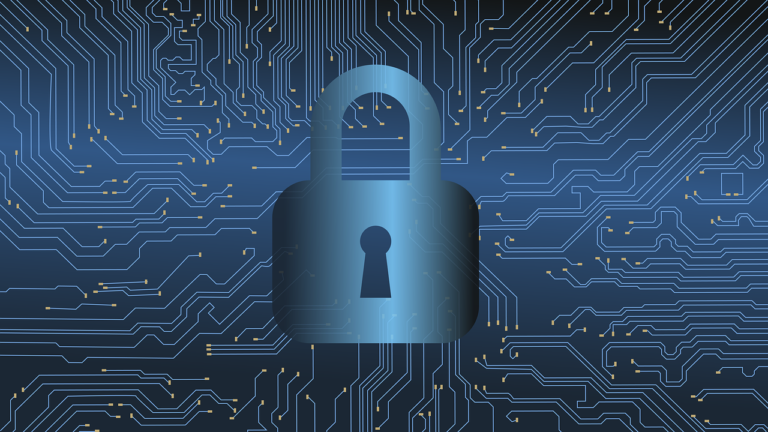In today’s digital age, where almost every aspect of our lives is connected to the internet, it is crucial to be aware of the various network vulnerabilities that exist. One such vulnerability is the man in the middle (MITM) attack, which can lead to serious consequences such as digital fraud. In this article, we will explore what man in the middle attacks are, how they work, and most importantly, how you can protect yourself against them.
Understanding the importance of this topic is crucial, as it can help you safeguard your personal and financial information. By being aware of the potential threats and knowing how to protect yourself, you can navigate the digital world with greater confidence and security.
Understanding Man in the Middle Attacks
A man in the middle attack is a type of cyber attack where an attacker intercepts communication between two parties without their knowledge. The attacker positions themselves between the sender and the receiver, allowing them to eavesdrop on the communication and even manipulate the data being transmitted.
The Concept of Man in the Middle Attacks
The concept of a man in the middle attack is relatively straightforward. It involves an attacker positioning themselves between two parties who are communicating with each other. This allows the attacker to intercept the communication, gaining access to the information being transmitted.
This type of attack can have serious consequences, as the attacker can not only eavesdrop on the communication but also manipulate the data being transmitted. This can lead to a range of issues, from the theft of personal information to financial fraud.
How Man in the Middle Attacks Work
To understand how man in the middle attacks work, let’s consider a scenario where Alice wants to communicate with Bob over an insecure network. Normally, Alice’s data would be encrypted and sent directly to Bob. However, in a man in the middle attack, the attacker, let’s call him Eve, intercepts the communication between Alice and Bob.
Eve can achieve this by various means, such as compromising a router or using malicious software. Once Eve has intercepted the communication, she can either passively eavesdrop on the conversation or actively manipulate the data being transmitted. This can include altering messages, stealing sensitive information, or even injecting malicious code into the communication.
In some cases, Eve may even impersonate Bob, tricking Alice into believing that she is communicating directly with Bob. This allows Eve to gain even more control over the communication, potentially leading to even more serious consequences.
Common Targets of Man in the Middle Attacks
Man in the middle attacks can target various types of communication, including:
- Wi-Fi Networks: Public Wi-Fi networks are particularly vulnerable to man in the middle attacks. Attackers can set up fake Wi-Fi hotspots that mimic legitimate networks, tricking users into connecting to them and intercepting their data.
- Email: Email communication can also be targeted by man in the middle attacks. Attackers can intercept emails and gain access to sensitive information, such as login credentials or financial details.
- Online Banking: Man in the middle attacks pose a significant threat to online banking. Attackers can intercept login credentials, account numbers, and other sensitive information, allowing them to carry out fraudulent transactions.
- E-commerce: When making online purchases, users often enter their credit card information or other personal details. Man in the middle attacks can intercept this information, leading to identity theft or unauthorized transactions.
Additional Targets of Man in the Middle Attacks
In addition to the targets mentioned above, man in the middle attacks can also target other types of communication. This can include social media platforms, online gaming platforms, and even online voting systems.
By intercepting the communication between users and these platforms, attackers can gain access to a wealth of personal information. This can include usernames, passwords, personal messages, and even credit card information.
Protecting Yourself Against Man in the Middle Attacks
Now that we understand the potential risks of man in the middle attacks, let’s explore some effective ways to protect ourselves against them.
1. Use Encrypted Connections
One of the most effective ways to protect yourself against man in the middle attacks is to use encrypted connections. Encryption ensures that the data being transmitted is secure and cannot be easily intercepted or manipulated by attackers.
When browsing the internet, make sure to look for the “https” prefix in the website’s URL. The “s” stands for secure, indicating that the connection is encrypted. Additionally, consider using a virtual private network (VPN) when connecting to public Wi-Fi networks. A VPN encrypts your internet traffic, making it difficult for attackers to intercept your data.
2. Understand the Importance of Encryption
Understanding the importance of encryption can go a long way in protecting yourself against man in the middle attacks. Encryption works by converting your data into a format that can only be read with the correct decryption key.
This means that even if an attacker manages to intercept your communication, they will not be able to understand the data without the decryption key. This makes encryption a powerful tool in protecting your data against man in the middle attacks.
3. Be Cautious of Public Wi-Fi Networks
As mentioned earlier, public Wi-Fi networks are a common target for man in the middle attacks. To protect yourself, it is essential to be cautious when connecting to such networks.
Avoid connecting to unsecured or unknown Wi-Fi networks, especially those that do not require a password. Instead, opt for trusted networks or use your mobile data connection when accessing sensitive information or making online transactions.
4. Understand the Risks of Public Wi-Fi Networks
Public Wi-Fi networks can be convenient, but they also come with risks. These networks are often unsecured, making it easy for attackers to intercept your data.
Even if a public Wi-Fi network requires a password, it may still be vulnerable to man in the middle attacks. This is because other users on the network could potentially intercept your data. Therefore, it’s important to be cautious when using public Wi-Fi networks, especially when accessing sensitive information.
5. Keep Your Software Updated
Keeping your software, including operating systems, web browsers, and antivirus programs, up to date is crucial for protecting yourself against man in the middle attacks. Software updates often include security patches that address known vulnerabilities, making it harder for attackers to exploit them.
Enable automatic updates whenever possible, as this ensures that you are always running the latest version of the software. Regularly check for updates manually if automatic updates are not available.
6. Understand the Importance of Software Updates
Software updates are not just about adding new features or improving performance. They also play a crucial role in protecting your devices against cyber attacks.
Many software updates include security patches that fix known vulnerabilities. By keeping your software up to date, you can ensure that you are protected against these vulnerabilities, reducing the risk of man in the middle attacks.
7. Use Two-Factor Authentication
Two-factor authentication adds an extra layer of security to your online accounts. By requiring a second form of verification, such as a unique code sent to your mobile device, two-factor authentication makes it more difficult for attackers to gain unauthorized access to your accounts.
Enable two-factor authentication whenever it is available, especially for sensitive accounts such as online banking or email. This additional step can significantly reduce the risk of man in the middle attacks.
8. Understand the Benefits of Two-Factor Authentication
Two-factor authentication is a powerful tool in protecting your online accounts. By requiring a second form of verification, it makes it much harder for attackers to gain access to your accounts.
Even if an attacker manages to steal your password, they will still need the second form of verification to access your account. This can be a unique code sent to your mobile device, a fingerprint scan, or even a facial recognition scan.
9. Be Mindful of Phishing Attempts
Phishing is a common technique used by attackers to trick users into revealing sensitive information. Man in the middle attacks can be facilitated through phishing attempts, where users unknowingly provide their login credentials or other personal details to attackers.
To protect yourself, be mindful of suspicious emails, messages, or websites that ask for personal information. Avoid clicking on suspicious links and never provide sensitive information unless you are certain of the legitimacy of the request.
10. Understand the Risks of Phishing Attempts
Phishing attempts can be very convincing, often mimicking the look and feel of legitimate websites or emails. However, they are designed to trick you into revealing sensitive information, such as your login credentials or credit card information.
By being aware of the signs of phishing attempts, such as suspicious email addresses, spelling errors, and requests for personal information, you can protect yourself against these attacks.
Conclusion
Man in the middle attacks pose a significant threat in today’s interconnected world. Understanding how these attacks work and implementing the necessary precautions can help protect yourself against digital fraud and other potential consequences. By using encrypted connections, being cautious of public Wi-Fi networks, keeping your software updated, using two-factor authentication, and being mindful of phishing attempts, you can significantly reduce the risk of falling victim to man in the middle attacks. Stay vigilant and prioritize your online security to safeguard your digital presence.
In conclusion, while the digital world offers many conveniences, it also comes with risks. Man in the middle attacks are a serious threat, but by understanding how they work and taking the necessary precautions, you can protect yourself and your data. Remember, your online security is in your hands. Stay safe and secure in the digital world.










